
Gamps: An Important Part of “Yarn Math”
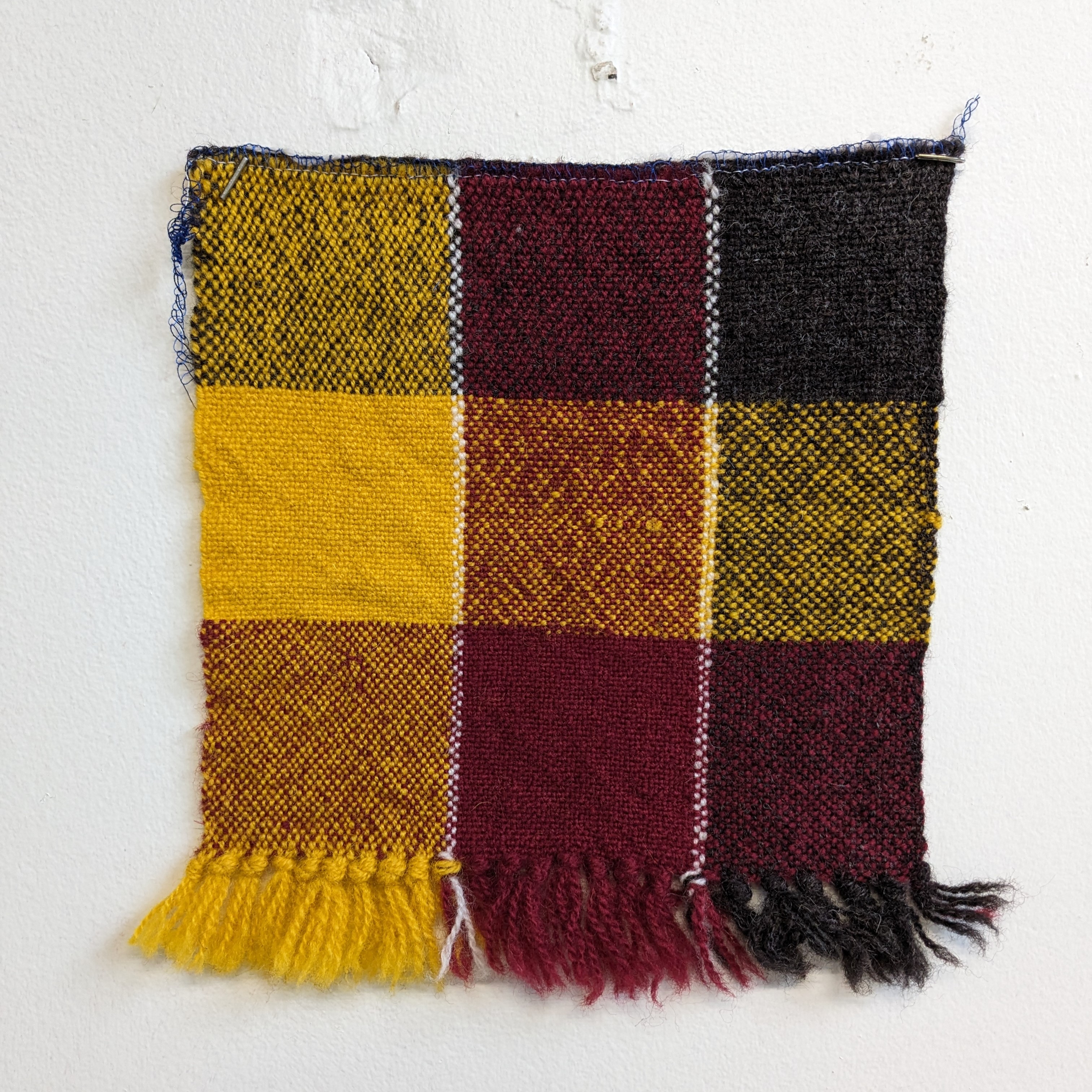
Samples save heartache. In this blog post, weaver Caroline Feyling writes about gamps—an important step in the weaving process that can prevent trouble down the road.
Weaving takes a lot of planning. There are plenty of variables to consider when doing your “yarn math” before starting a project. It can be daunting, but good record-keeping and sampling can take some of the guesswork out of project planning.
One tool that can be used to gather information for project planning is a “gamp.” A gamp is a swatch of cloth that has variables in both the warp and weft direction as opposed to a sampler which has a variable in only the weft direction. You can use a gamp to test a variety of project aspects such as thread density (sett), weave structure, and color. Once completed, a gamp serves as a handy reference for how that particular yarn behaves. Ideally, you would have gamps for every yarn you use often for design reference.
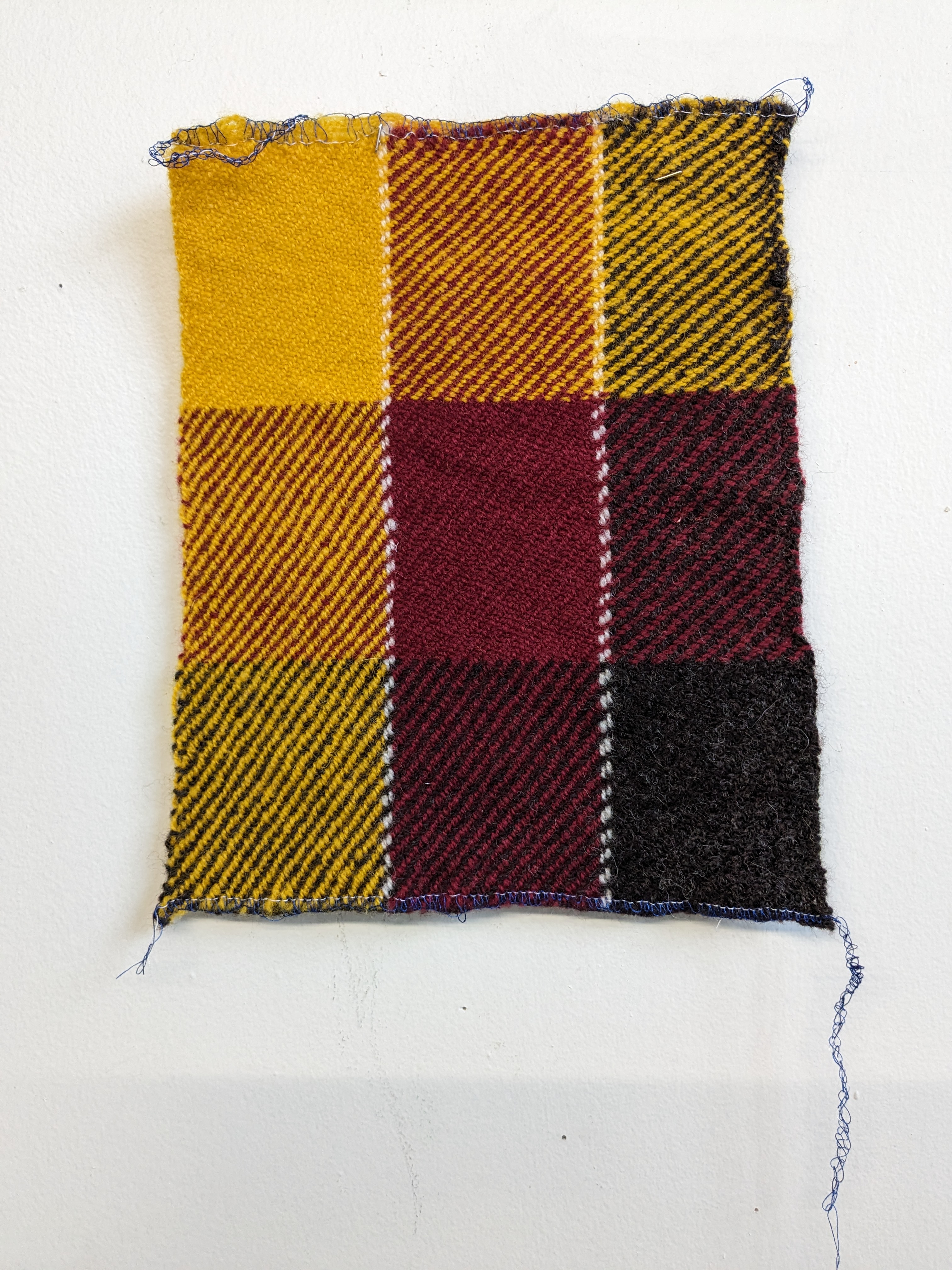
This spring, I have been working with fellow weaver and North House Instructor Erin Endsley to learn about her methods for sampling and finishing wool pieces. Part of my homework from her was to create sett gamps for two different yarns so that we could observe the shrinkage rates for the different setts.
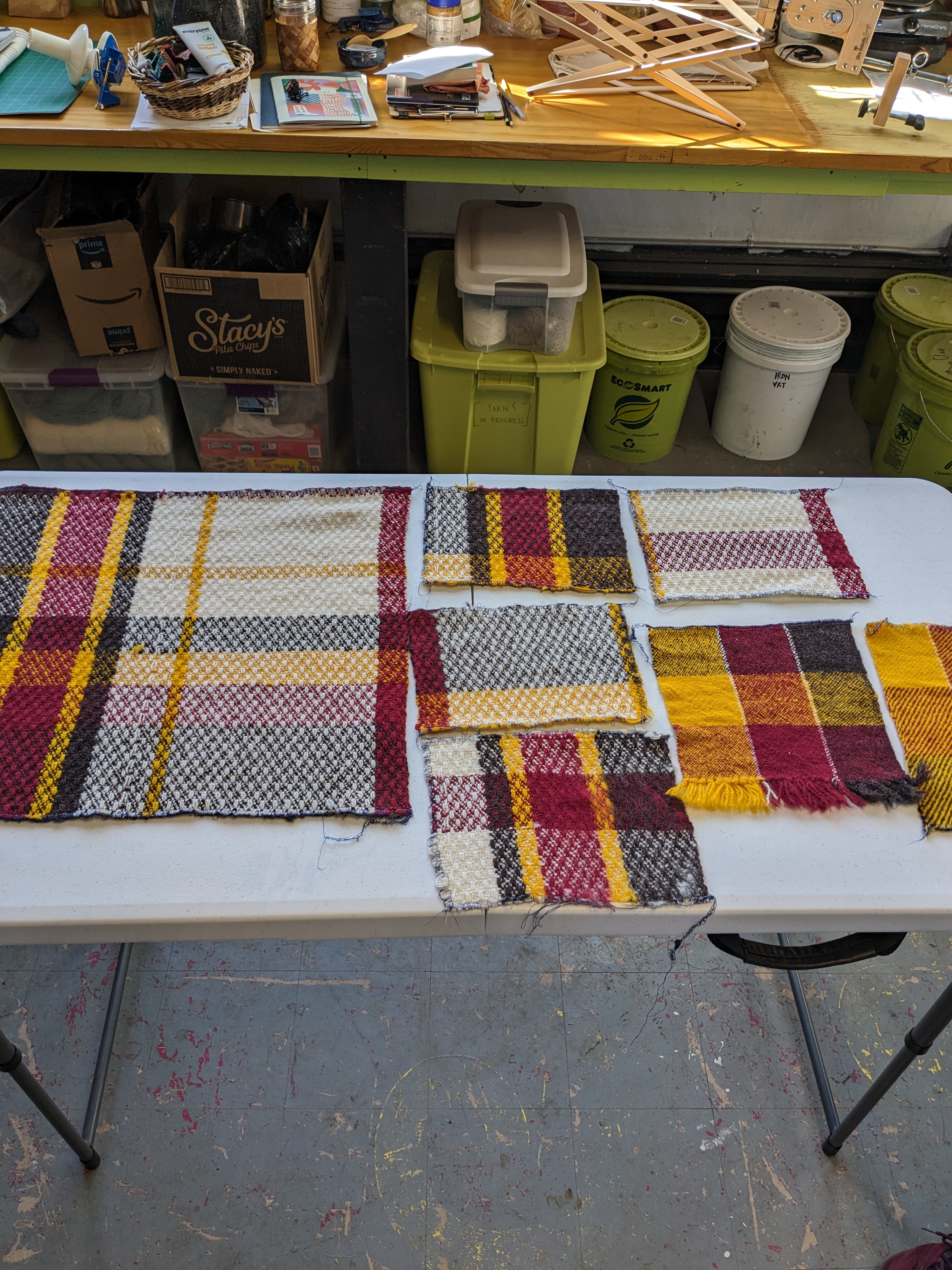
For my gamps, I divided my warp into three sections. One set at 12 ends per inch, one set at 18 ends per inch, and one set at 24 ends per inch. When I wove the gamp I beat at 12, 18, and 24 pick per inch respectively. This gave me a cloth that had nine different setts within the same piece. For each yarn I sampled I wove a gamp in both plain weave and twill as the weave structure greatly affects the cloth density and therefore the shrinkage rate. On my first set of gamps, I observed that the gamp woven in twill shrank more than the one woven in plain weave.
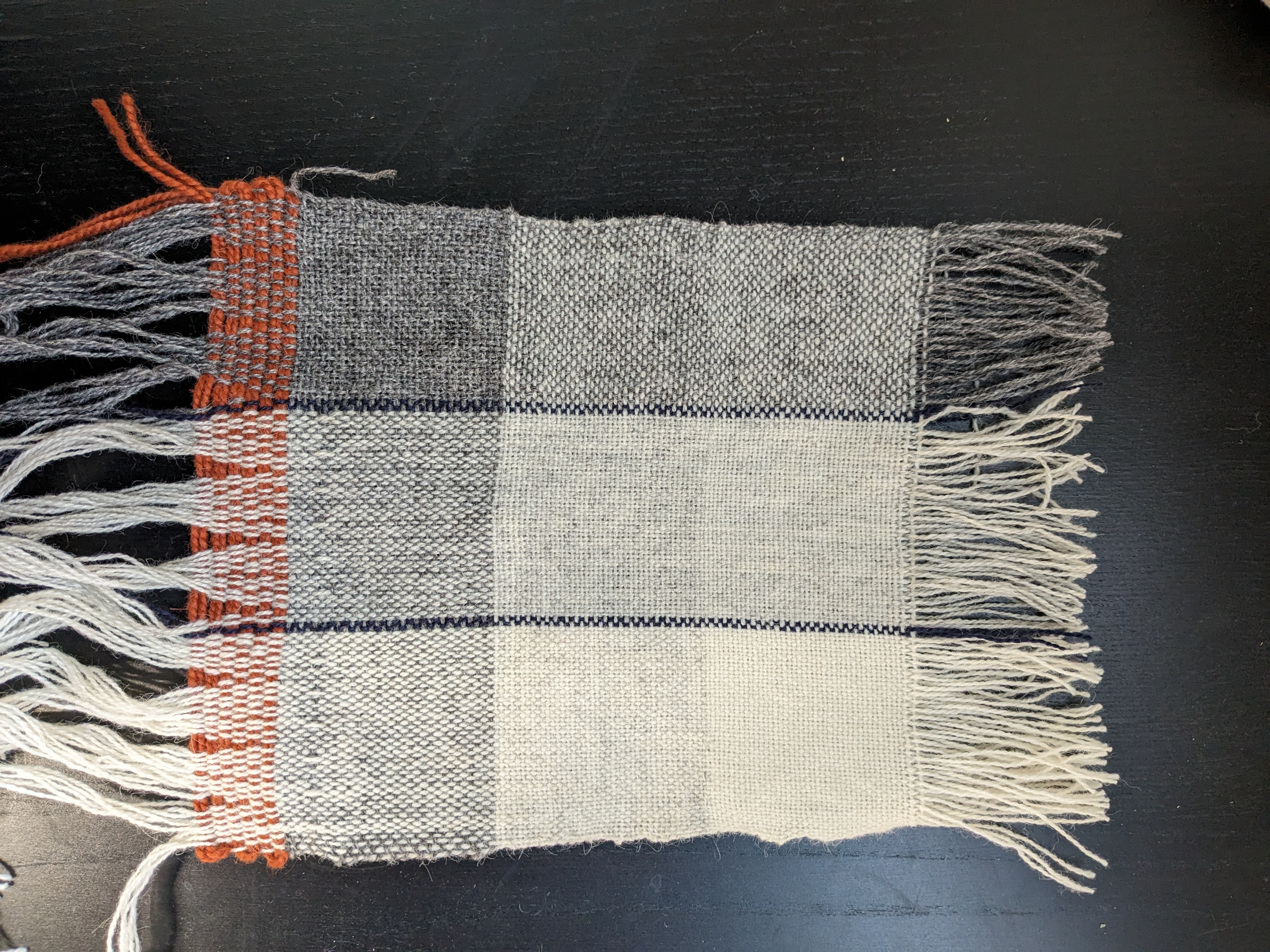
After weaving my first set of gamps I decided to try a new technique to set up my second set of gamps. Instead of removing the waste yarn, or thrums, from my loom, I left them on and tied my new warp onto the old one. This involved knotting all 162 warp threads to each other individually. For this technique you knot the warp ends in front of the reed and then carefully pull the knots through the reed and heddles. Then you beam on as usual.
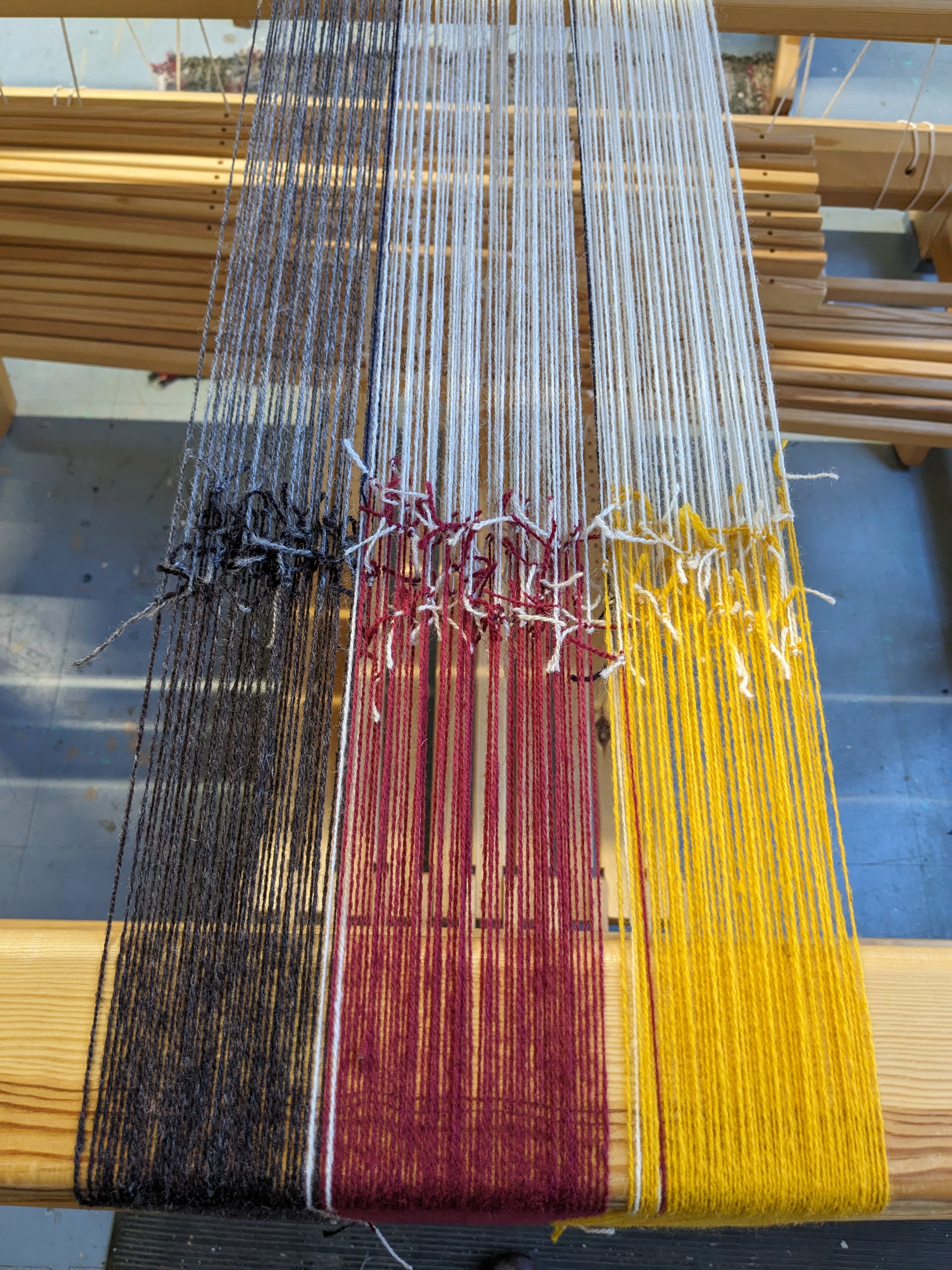
I found this process incredibly tedious and not worth the effort. It did end up being slightly faster than setting up from scratch, but only because I had so few warp ends. The only time I could see this technique being worth the time is if it was a large piece with an incredibly complex threading.
Weaving up gamps is another step that can feel optional when you are excited to begin a new project. But visualizing how a yarn will look woven up can help you make informed design decisions. As annoying as they can be, samples and mockups save heartache.